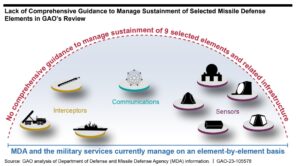
A new Government Accountability Office (GAO) audit of the Missile Defense System’s (MDS) sustainment and readiness found the Defense Department “lacks comprehensive guidance for sustaining” the various MDS pieces like interceptors, sensors and communications. This audit is the result of a provision in the National Defense Authorization Act for Fiscal Year 2022, which directed GAO to examine MDA sustainment and readiness. The office focused on nine fielded MDA elements: the Ground-based Midcourse Defense (GMD) system; Lockheed Martin [LMT] Terminal High…

 By
By 











